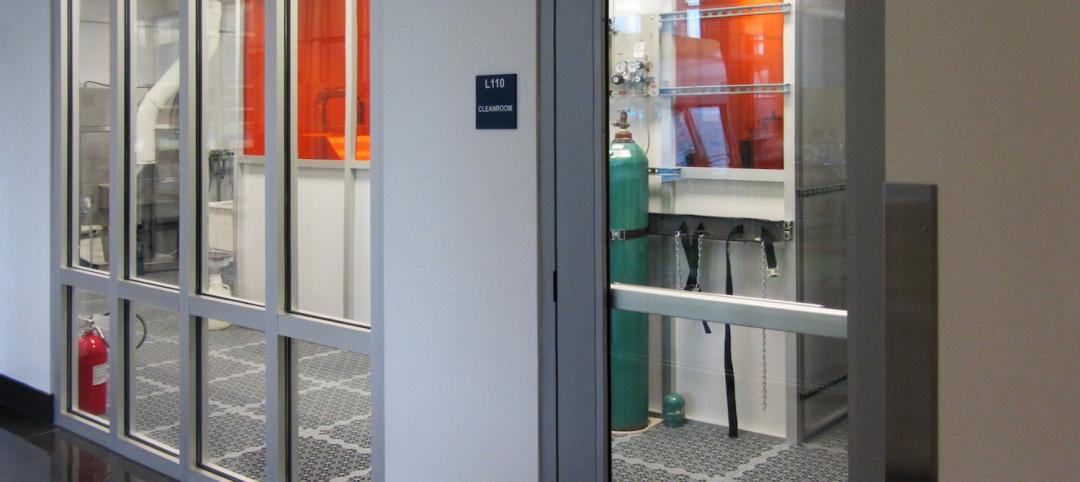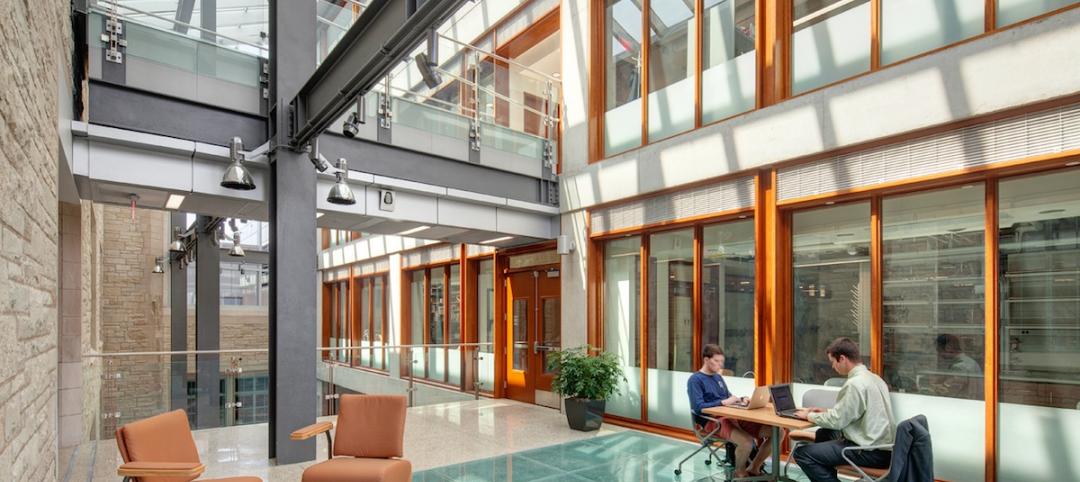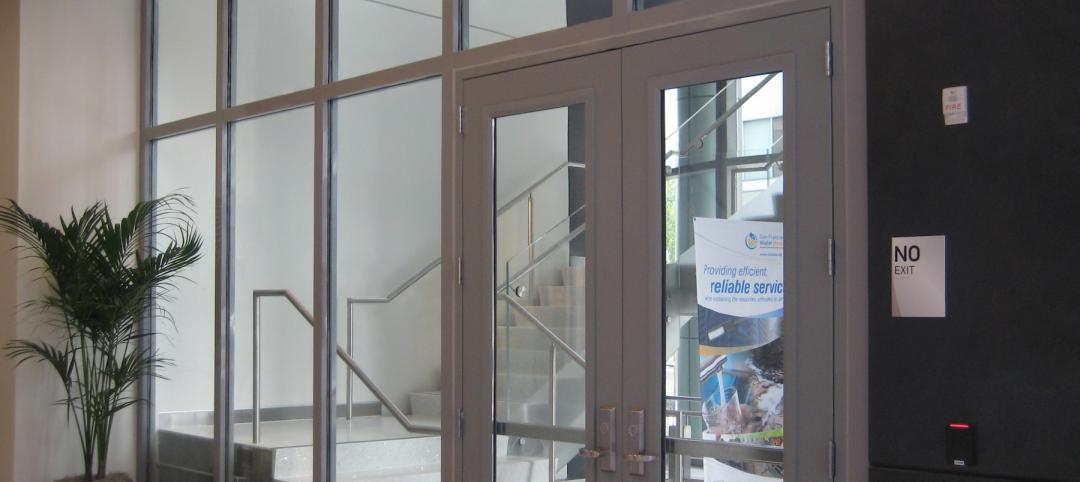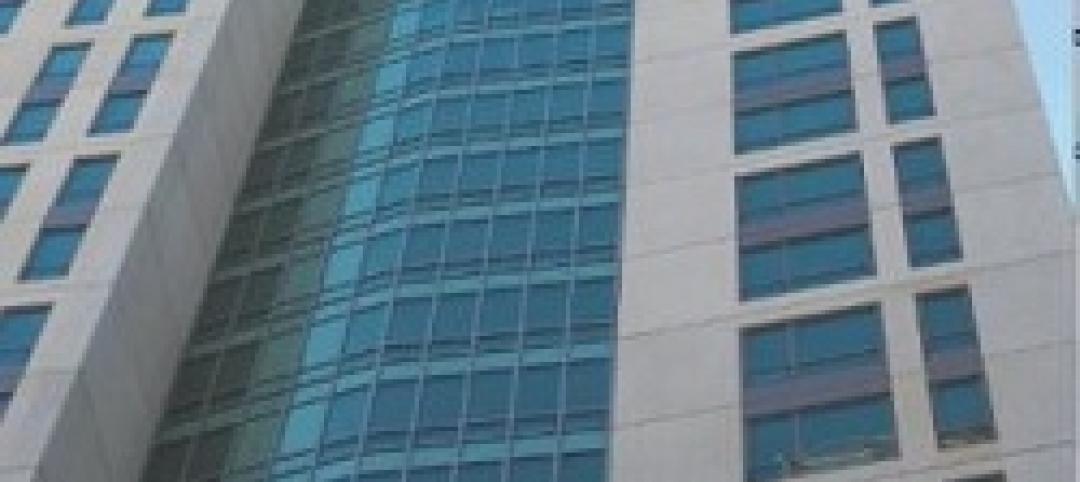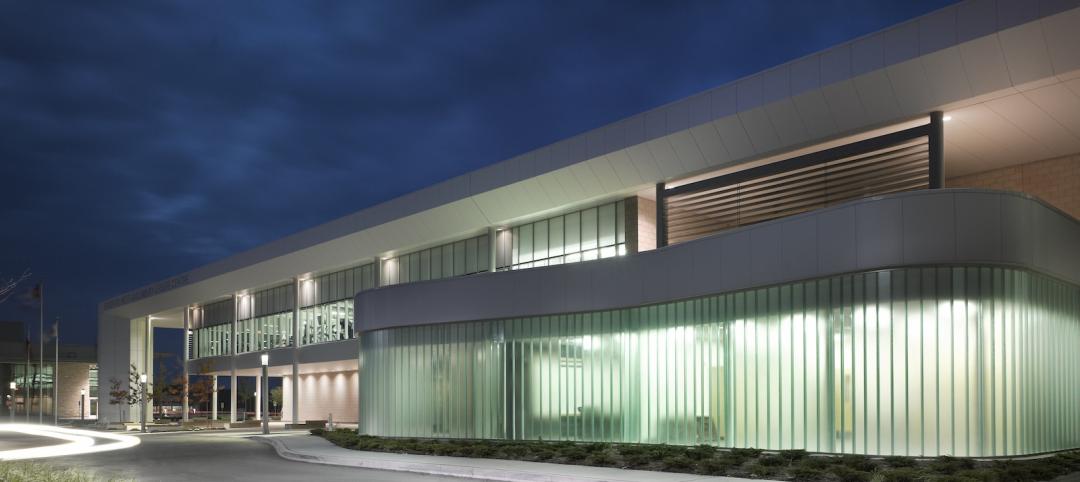Constructing contemporary building enclosures while avoiding installation problems during construction and performance problems in service is an unrelenting challenge for Building Teams. The margin for error is minimal. Increasingly complex building designs, thin profit margins, and demanding schedules do not allow for rework during construction, nevermind callbacks and disputes after occupancy.
In the mechanical/electrical/plumbing (MEP) realm, a well-established practice for managing these challenges during the preconstruction phase is the “coordination drawings” process. In stark contrast, building enclosure preconstruction coordination (or lack thereof) is typically characterized by shop drawings focused on each enclosure component separately, with a generic representation of the adjacent construction.
Although most of this article discusses the general and trade contractors’ efforts during the preconstruction/construction phase, a fair discussion on shop drawings is incomplete without emphasizing the importance of the design documentation.
The designer of record must clearly articulate the basis of design for the building enclosure systems in the contract documents. By avoiding illustrating complicated details, or by omitting or illegibly illustrating the intent for air, water, vapor (as appropriate for the project conditions), and thermal barrier continuity, the designer of record handicaps the project’s chances for success.
Adjacent systems/substrates omitted
It is common for construction teams to submit enclosure shop drawings comprised solely of manufacturer’s standard product details without substrate identification and information on interfacing components. This practice is at best inefficient, requiring revisions and avoidable extra administrative time by the Building Team.
It is even more common that the installation proceeds on this basis without regard to project-specific conditions. Interface details are field-coordinated under the pressure of the construction schedule, and, when conflicts are identified, the solutions available to the Building Team are often limited, as products are already fabricated and installed.
Case Study: A multiunit residential project in Maryland included a building expansion joint within the plaza waterproofing system, including several horizontal-to-vertical transitions. The initial expansion joint submittal consisted of a manufacturer’s standard detail (Figure 1). The illustration did not show the geometry at the corner transitions or any of the interfacing materials. The construction team produced four iterations of shop drawing revisions, spanning several months, to arrive at the final version suitable for executing the work in the field.
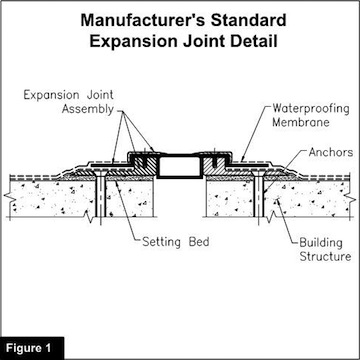
The Building Team certainly would rather have used the time spent generating and reviewing these revisions for other important tasks. How could they have collectively made better use of time? The design drawings should have highlighted the need for the expansion joint to traverse an outside corner. The construction team should have made an effort to anticipate the interfacing materials, establish a plan to execute the work on paper in advance of the construction, and include the necessary information in the initial version of the shop drawings; producing something similar to Figure 2.
Often, meetings among the affected contractors, manufacturers, and design team members can facilitate a critical review of the substrates and interfacing materials that must come together at these challenging details.
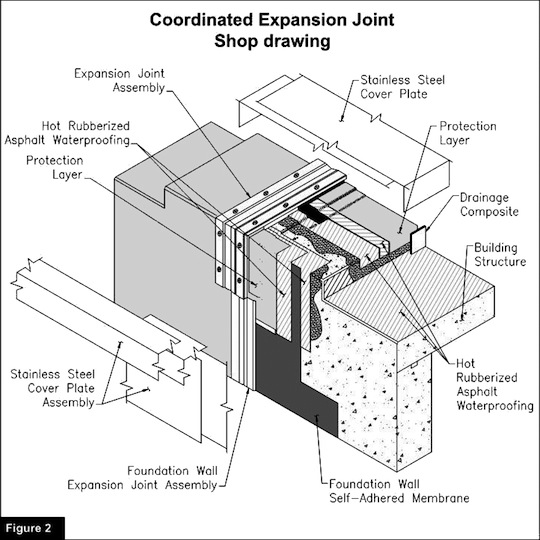
Adjacent Systems “By Others”
When building enclosure shop drawings do show adjacent enclosure components, they rarely do so accurately and are often adorned with the construction industry’s perilous “by others,” and installers are left to deal with the fallout resulting from the lack of coordination at interfaces between enclosure components.
Case Study: A high-rise building in Virginia included a glazed curtain wall adjacent to a terrace with hot-applied rubberized asphalt (HRA) waterproofing. The membrane flashing integration between the HRA base flashing and curtain wall sill was well illustrated in the contract documents.
Both the waterproofing contractor and glazing contractor prepared their own (otherwise satisfactory) shop drawing packages, and each included a version of this transition detail from their own perspectives (Figures 3 and 4). Both parties noted the membrane flashing integration as “by others.” Fortunately, the general and trade contractors identified this near miss shortly before installing terrace overburden that would have concealed the transition.
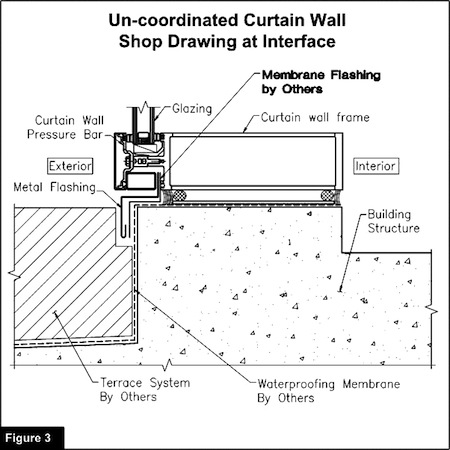
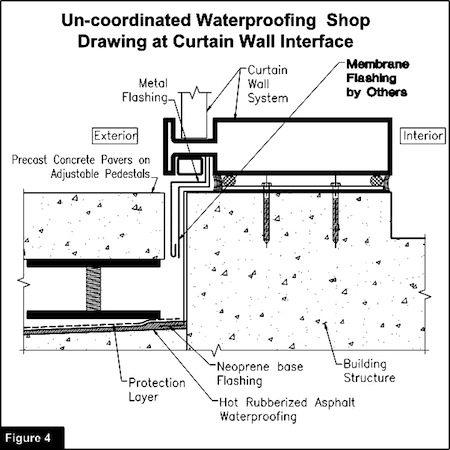
Near misses like this are not welcome on construction projects and tend to cause lost time and added effort by many parties. How could this situation have been avoided through a preconstruction coordination process? Similar to a MEP coordination drawings session, the affected contractors, manufacturers, and design team members could have met, overlaid the two versions of the transition detail, and asked “Who owns the membrane transition flashing?” and, subsequently, “Have we verified compatibility of all adjacent materials?” This exercise would have quickly facilitated the production of a coordinated, construction-ready shop drawing transition detail.
Conclusion
The building enclosure as a whole is no longer a combination of individual materials, but a holistic system with overall performance requirements that rely on the integration and coordination of building components to establish system continuity. Building enclosure shop drawings play a critical role in guarding against common performance, cost, and schedule pitfalls associated with the transitions between adjacent enclosure components. Building Teams can follow some basic guidelines to derive value from coordinated building enclosure shop drawings:
- Owners: Consider investing in Building Enclosure Commissioning (BECx) at a project's inception. BECx is a quality-assurance-focused process designed to verify that the Building Team is meeting the Owner’s project requirements. A BECx Agent is well positioned to help the Building Team manage the coordination challenges discussed above.
- Designers: Prepare design documents with clear designation for how the air, water, vapor (as appropriate for the project conditions), and thermal barriers transition between adjacent enclosure components to provide continuous building systems.
- Designers: Include a requirement for coordinated building enclosure shop drawings in the project specifications. Require singular, fully superimposed details (with regards to compatibility, performance, and constructability/sequencing) at each enclosure transition.
- Contractors: Submit building enclosure shop drawings that include substrate information, adjacent materials, flashings, sealants, and sequencing requirements that are coordinated between the affected trades and ready for execution in the field.
- Contractors: Understand that coordination of building enclosure systems is a critical aspect of improving building performance, managing risk, improving trade coordination and scheduling, and increasing trade contractor production.
About the Authors: John N. Karras and Jeffrey D. Kerr are with Simpson Gumpertz & Heger Inc.’s (SGH) Building Technology division in Washington, D.C. Both have diverse construction industry experience in construction management and building enclosure design, consulting, and investigation.
Related Stories
| May 27, 2014
Fire Rated Glass contributes to open lab environment at JSNN
Openness and transparency were high priorities in the design of the Joint School of Nanoscience & Nanoengineering within the Gateway University Research Park in Greensboro, N.C. Because the facility’s nanobioelectronics clean room houses potentially explosive materials, it needed to be able to contain flames, heat, and smoke in the event of a fire. SPONSORED CONTENT
| May 27, 2014
Contractors survey reveals improving construction market
The construction industry is on the road to recovery, according to a new survey by Metal Construction News. Most metrics improved from the previous year’s survey, including a 19.4% increase in the average annual gross contracting sales volume. SPONSORED CONTENT
| May 20, 2014
Kinetic Architecture: New book explores innovations in active façades
The book, co-authored by Arup's Russell Fortmeyer, illustrates the various ways architects, consultants, and engineers approach energy and comfort by manipulating air, water, and light through the layers of passive and active building envelope systems.
| May 20, 2014
Using fire-rated glass in exterior applications
Fire-rated glazing and framing assemblies are just as beneficial on building exteriors as they are on the inside. But knowing how to select the correct fire-rated glass for exterior applications can be confusing. SPONSORED CONTENT
| May 13, 2014
19 industry groups team to promote resilient planning and building materials
The industry associations, with more than 700,000 members generating almost $1 trillion in GDP, have issued a joint statement on resilience, pushing design and building solutions for disaster mitigation.
Sponsored | | May 3, 2014
Fire-rated glass floor system captures light in science and engineering infill
In implementing Northwestern University’s Engineering Life Sciences infill design, Flad Architects faced the challenge of ensuring adequate, balanced light given the adjacent, existing building wings. To allow for light penetration from the fifth floor to the ground floor, the design team desired a large, central atrium. One potential setback with drawing light through the atrium was meeting fire and life safety codes.
| Apr 25, 2014
Recent NFPA 80 updates clarify fire rated applications
Code confusion has led to misapplications of fire rated glass and framing, which can have dangerous and/or expensive results. Two recent NFPA 80 revisions help clarify the confusion. SPONSORED CONTENT
| Apr 8, 2014
Fire resistive curtain wall helps The Kensington meet property line requirements
The majority of fire rated glazing applications occur inside a building to allow occupants to exit the building safely or provide an area of refuge during a fire. But what happens when the threat of fire comes from the outside? This was the case for The Kensington, a mixed-use residential building in Boston.
| Apr 2, 2014
8 tips for avoiding thermal bridges in window applications
Aligning thermal breaks and applying air barriers are among the top design and installation tricks recommended by building enclosure experts.
Sponsored | | Mar 30, 2014
Ontario Leisure Centre stays ahead of the curve with channel glass
The new Bradford West Gwillimbury Leisure Centre features a 1,400-sf serpentine channel glass wall that delivers dramatic visual appeal for its residents.



